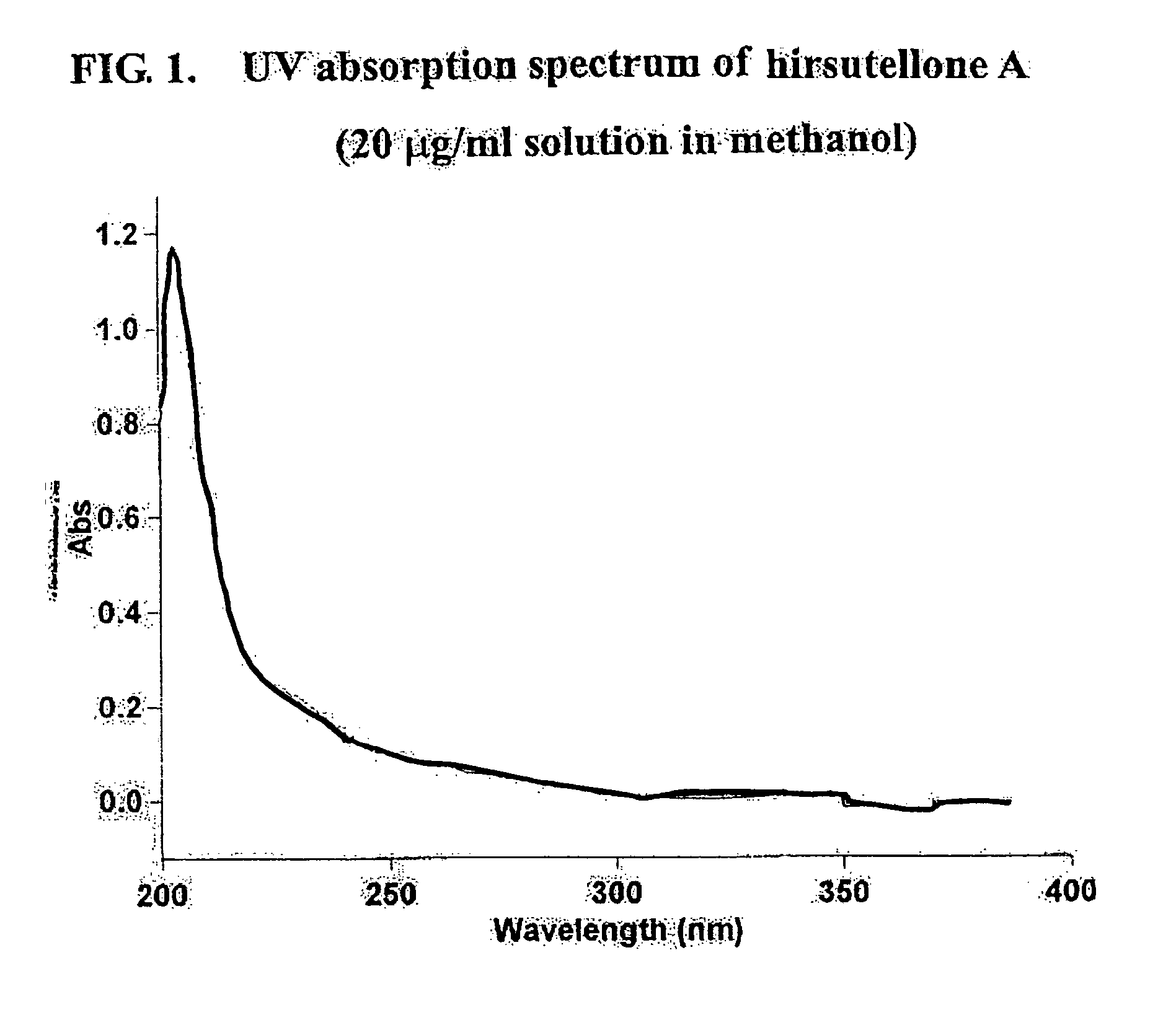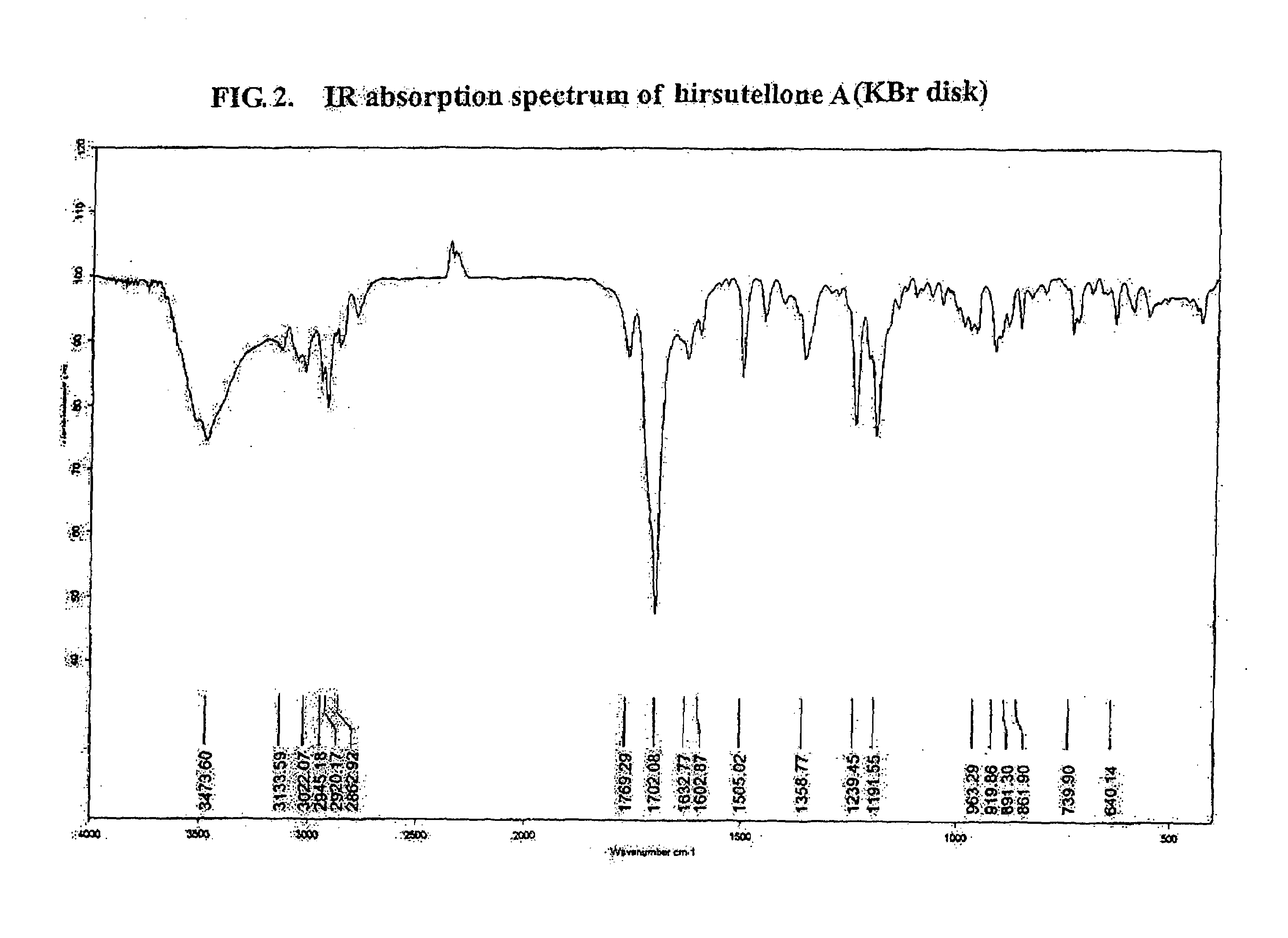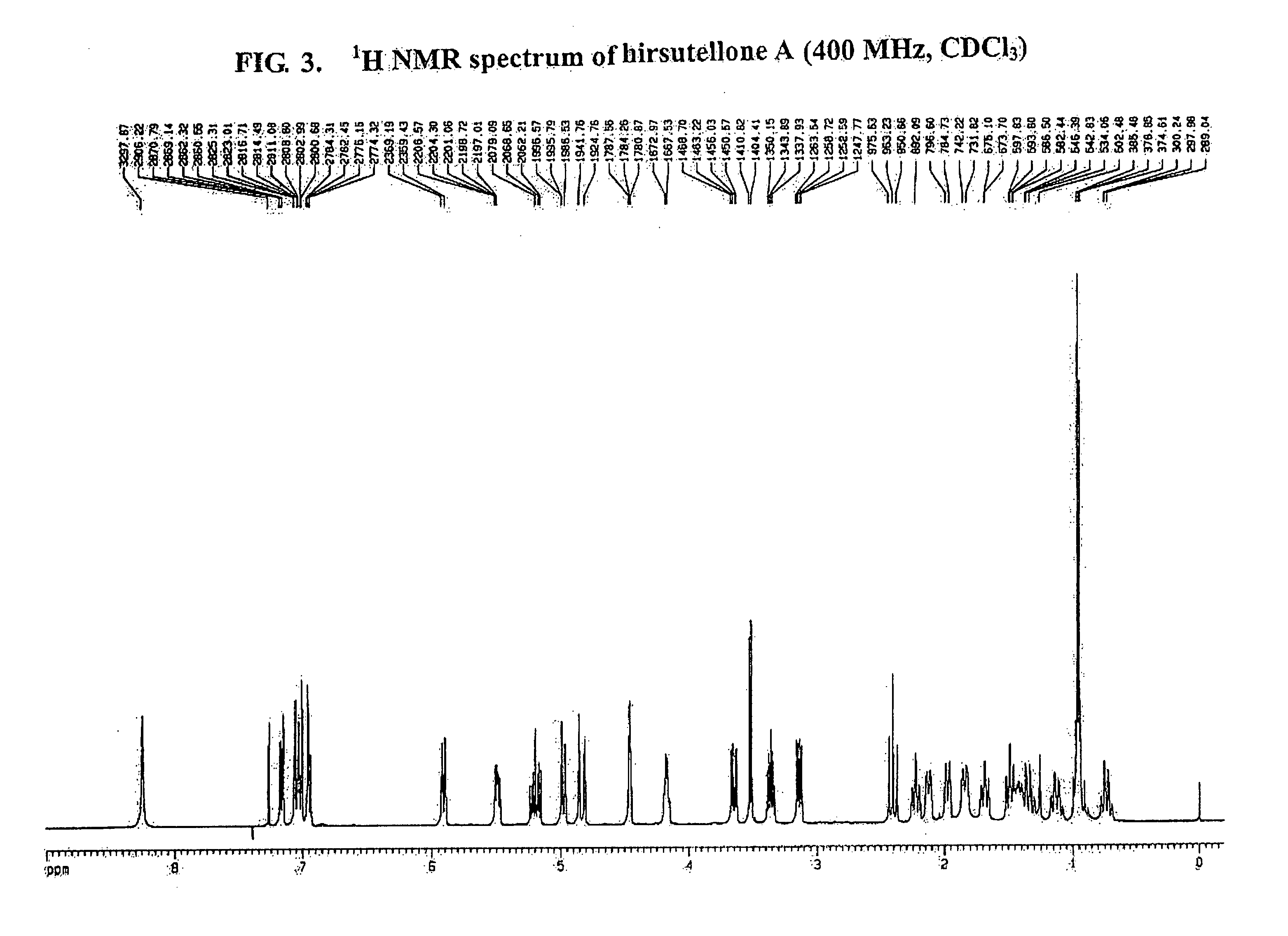Antituberculosis compounds, Hirsutellones A, B, and C
a technology of hirsutellone and antituberculosis, which is applied in the direction of anthracene dye, plant growth regulator, biocide, etc., can solve the problems of inability of antibiotics to inhibit the growth of bacteria, inability of second-line drugs to be effective and/or relatively high toxicity, and inability to achieve the effect of treatment within six months
- Summary
- Abstract
- Description
- Claims
- Application Information
AI Technical Summary
Benefits of technology
Problems solved by technology
Method used
Image
Examples
example 1
Preparation of Hirsutellones by Fermentation of Hirsutella nivea BCC 2594
[0043]Background Hirsutella nivea was described as a new species from leaf-hoppers (Homoptera: Cicadellidae) (Hywel-Jones N. L., Mycol. Res., 101: 1202-1206 (1997)) and was based on a specimen (NHJ665.01) collected from Khao Yai National Park in Thailand (Dec. 12, 1991). Collections at the time of publication yielded no viable cultures. Isolate BCC2594 was secured from conidia of a single specimen. Collection details were as follows.
[0044]The specimen was classified as phylum Ascomycota, class Mitosporic, order Hypocreales, family Clavicipitaceae, genus Hirsutella, species nivea. This fungus was deposited on Mar. 2, 2000 at the Thailand BIOTEC Culture Collection (BCC), National Center for Genetic Engineering and Biotechnology, BIOTEC Central Research Unit, 113 Thailand Science Park, Phaholyothin Road, Klong 1, Klongluang, Pathumthani 12120, Thailand, as accession number BCC 2594.
[0045]Hirsutella nivea, BCC 2594...
example 2
Preparation of Hirsutellones by Fermentation of Trichoderma sp. BCC 7579
[0076]Background This fungus was isolated from a decaying pod of Entada perseatha (Leguminosae) collected in Thailand and deposited at the Thailand BIOTEC Culture Collection as BCC 7579 on Oct. 5, 2000.
[0077]The fungus was identified as a Trichoderma anamorph of Hypocrea gelatinosa (Tode: Fr.) Fr. The fungus is identified as Trichoderma by the following morphological characteristics: greenish pustules or tuffs of colonies, an identical branching of conidiophores, flask-shaped conidiogenous cells, and one-celled conidia in a dark green slimy drop. The phylogenetic analysis, using the internal transcribed spacers (ITS) sequence, also supports placing the fungus in the taxon Trichoderma.
[0078]Growth and Colony Characteristics Colonies on Difco Cornmeal Agar at 20° C. after 7 days were translucent, with scant submerged mycelium, forming numerous small conidiogenous fascicles with slimy heads of conidia, with no pig...
example 3
Antituberculous Activity of Hirsutellones
[0088]Preparation of Mycobacteria Mycobacterium tuberculosis H37Ra strain (ATCC 25166) was grown in 100 ml of Middlebrook 7H9 broth supplemented with 0.2% glycerol, 1.0 g / l of casitone, 10% OADC, and 0.05% Tween 80. The complete medium was referred to as 7H9GC-Tween. The bacteria were incubated in 500-ml flasks on a rotary shaker at 200 rpm and 37° C. until the optical density at 550 nm reached 0.4-0.5. The bacteria were washed twice with phosphate-buffered saline and then suspended in 20 ml of phosphate-buffered saline. The suspension was passed through an 8-μm-pore-size filter to eliminate clumps. The number of bacteria in the filtrates were counted by plating the bacteria in Middlebrook 7H10 agar. The filtrates were stored at −80° C.
[0089]Microplate Alamar Blue Assays (MABA) Anti-tuberculous testing was performed in a 96-well microplate as previously described (Collins, L. and Franzblau, S. G., Antimicrob. Agents Chemother., 41:1004-1009 (...
PUM
| Property | Measurement | Unit |
|---|---|---|
| temperatures | aaaaa | aaaaa |
| temperatures | aaaaa | aaaaa |
| length | aaaaa | aaaaa |
Abstract
Description
Claims
Application Information
 Login to View More
Login to View More - R&D
- Intellectual Property
- Life Sciences
- Materials
- Tech Scout
- Unparalleled Data Quality
- Higher Quality Content
- 60% Fewer Hallucinations
Browse by: Latest US Patents, China's latest patents, Technical Efficacy Thesaurus, Application Domain, Technology Topic, Popular Technical Reports.
© 2025 PatSnap. All rights reserved.Legal|Privacy policy|Modern Slavery Act Transparency Statement|Sitemap|About US| Contact US: help@patsnap.com



